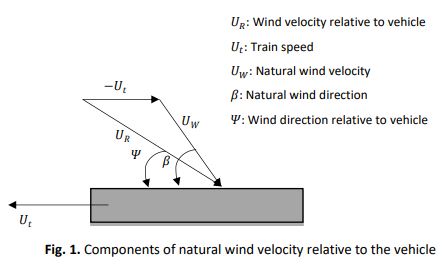Numerical Analysis on the Crosswind Influence Around a Generic Train Moving on Different Bridge Configurations
DOI:
https://doi.org/10.37934/arfmts.89.2.7698Keywords:
Aerodynamic loads, bridge, crosswind, flow regime, flow structure, generic trainAbstract
In this article, a numerical approach is applied to study the flow regimes surround a generic train model travelling on different bridge configurations under the influence of crosswind. The bridge is varies based on the different geometry of the bridge girder. The crosswind flow angle (Ψ) is varied from 0° to 90°. The incompressible flow around the train was resolved by utilizing the Reynolds-averaged Navier-Stokes (RANS) equations combined with the SST k-ω turbulence model. The Reynolds number used, based on the height of the train and the freestream velocity, is 3.7 × 105. In the results, it was found that variations of the crosswind flow angles produced different flow regimes. Two unique flow regimes appear, representing (i) slender body flow behaviour at a smaller range of Ψ (i.e. Ψ ≤ 45°) and (ii) bluff body flow behaviour at a higher range of Ψ (i.e. Ψ ≥ 60°). As the geometries of the bridge girder were varied, the bridge with the wedge girder showed the worst aerodynamic properties with both important aerodynamic loads (i.e. side force and rolling moment), followed by the triangular girder and the rectangular girder. This was due to the flow separation on the windward side and flow structure formation on the leeward side, both of which are majorly influenced by the flow that moved from the top and below of the bridge structures.
Downloads
































